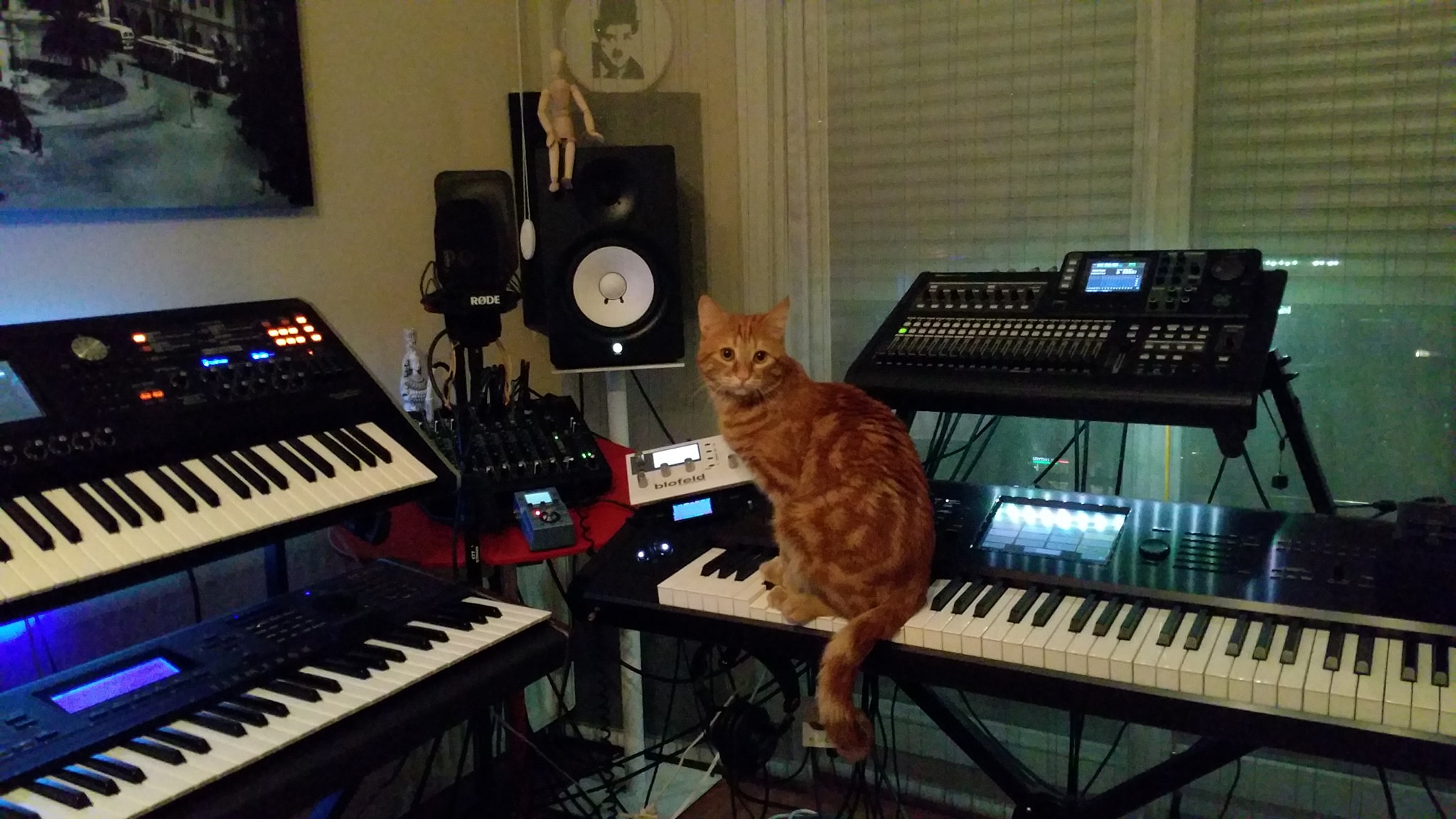
An orange cat sits atop a weighted 76 key workstation. We also see a Waldorf Blofeld and a Roland V-Synth, among other instruments.
From Berkant Atay via Facebook.

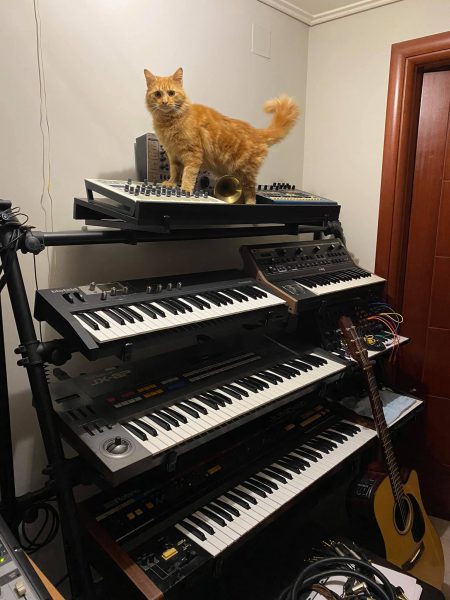
This cat sits proudly atop a four-level stand of keyboard synths. On Row 3 (below the cat), we see a Waldorf Blofeld and Moog Little Phatty Stage Edition. Below that a RolandJX-8P and Korg MS-20. On the bottom row is another Roland keyboard. And on top, the cat’s paws are sitting on an Arturia Spark. The instruments behind the cat are left as an exercise to the reader.
From Dimitri Chatzigiannakis via Facebook.
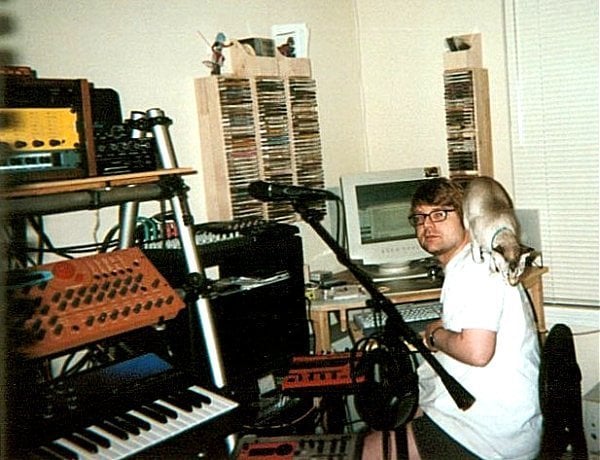
Today’s CatSynth pic takes us to the 2000s, with Rusty and his human James Maier in the studio. We see a Waldorf Microwave XT, a Nord Micro Modular, and more. From James Maier via Facebook.
TBT – Rusty Inspects Studio in 2000
Although it’s a small photo, it looks like Rusty has some of Big Merp’s color and markings.
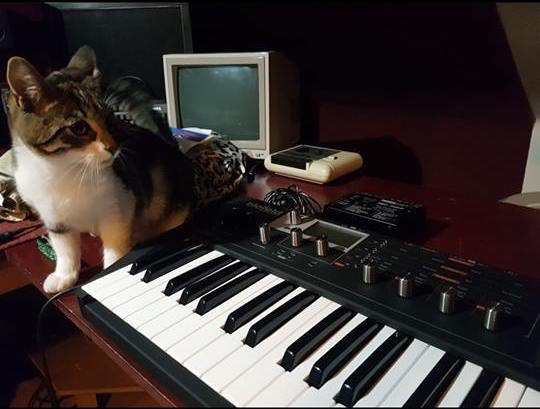
Boris checks out a Waldorf Blofeld synthesizer. Submitted by Edda Jayne Hill via our Facebook page.
A young and inquisitive Borris trying to work out the Blofeld.
I know he is more of an analogue cat tbh 😊
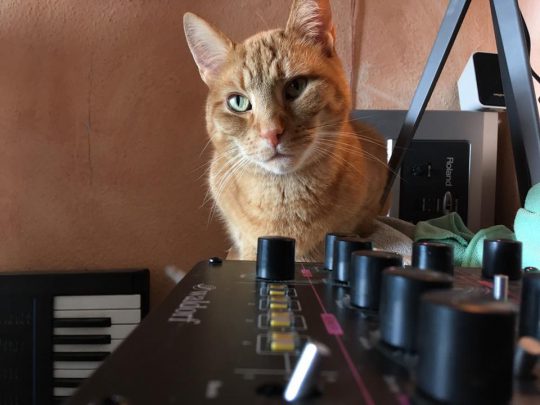
Loki poses with a Waldorf Streichfett synthesizer in a beautifully composed photo. From Nicky Skolagava via the Facebook group Synthesizer Freaks.
The angle makes the Streichfett look large, but it’s a rather compact little box with an interesting story. From the Waldorf website:
Streichfett combines the best of the previously extinct species of String Synthesizers of the 70s and early 80s. Its dual sound engine features a fully polyphonic strings section and an eight voice solo section, which is essential for recreating classic movie sounds from the 70s and 80s. The Ensemble Effect provides depth and movement to the String Section, while the Effects section adds adjustable Phaser and Reverb. Additionally, the Animate Effect can be used to modulate the strings registration, allowing spectacular sound morphs.

Adorable tabby cat resting next to a Waldorf Blofeld synthesizer. From flohrdumal on Instagram.
Analog cat warming up the digital synth
We would be remiss if we didn’t visit the Korg booth at NAMM, especially as Waldorf was there as well. We took some quick peeks at some of the new offerings, which you can see in this video.
The Korg Prologue synthesizer was among the most hyped instruments leading up to NAMM, so we of course had to check it out.
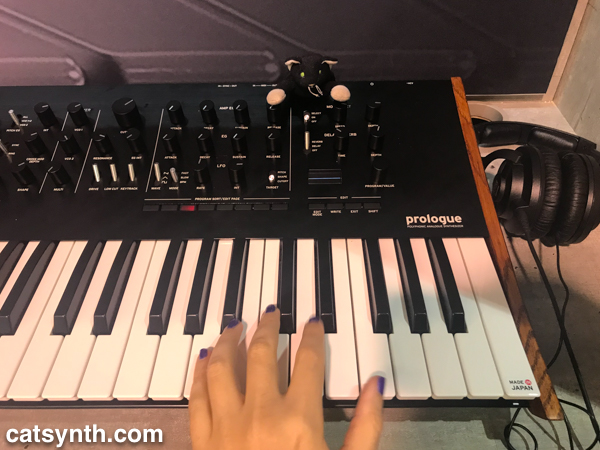
It is quite pretty, with a sleek black front panel and wooden side panels. The analog synth was not that exciting to us, as we at CatSynth are rather spoiled by the offerings of Dave Smith Instruments such as the Rev2 or Prophet 6. And it doesn’t fill the niche of the Minilogue as an affordable polyphonic analog synthesizer. What intrigues us is the open architecture for the digital oscillators that will allow advanced users to add their own programs. At NAMM, it is difficult to impossible to explore this, but we look forward to learning more about in the future.
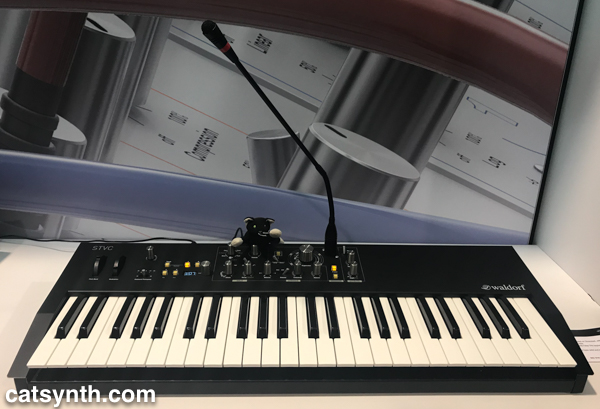
By contrast, the Waldorf STVC string synthesizer and vocoder was fun to play and sounded great on our first test. The vocoder played more smoothly with my voice than the Roland VP-03 that I frequently use (including in the opening for CatSynth TV). But it does require dialing in the exact right patch for one’s voice. When we returned to the booth to record our video segment, it took a while to find something that worked, and it wasn’t quite as good as that first time. But we know this is part of the deal with vocoders, and they require practice to play well.
Szarik that cat returns in this video featuring a variety of synths and vintage 1980s computers. By KATOD_music on YouTube. Submitted by KATOD via our Facebook page.
In the memory of Bruce Lee… greatest dragon!
My version on amazing “Enter The Dragon” theme music by Lalo Schifrin.
Lead and solo parts live played on Commodore 64. The rest of tracks sequentially recorded.
instruments:
– modified C64 + Mssiah cartridge synth software
– bass guitar
– Waldorf Blofeld synthesizer module
– Korg R3 synthesizer
– Dreamblaster tiny module (drums)
– Atari 1040 STE (MIDI sequencer)
Arranged, recorded, mixed and mastered by KATOD
Video-clip recorded and assembled by Katod.
Track: Enter The Dragon theme cover
My fanpage: http://www.fb.com/KATODmusic
My album you can find here:
SPOTIFY:
https://play.spotify.com/album/0mi4SY…
GOOGLE PLAY:
https://play.google.com/store/music/a…
EMPIK:
http://www.empik.com/7-cats,p11136393…
and also many other online music providers…
CD you can buy here:
http://www.generator.pl/p,katod-7cats…

From Zwaren Kost on the Facebook group Synthesizer Freaks. It was actually a response to this post.
I have had the opportunity to play a Waldorf Pulse, though I couldn’t find a NAMM review of it.